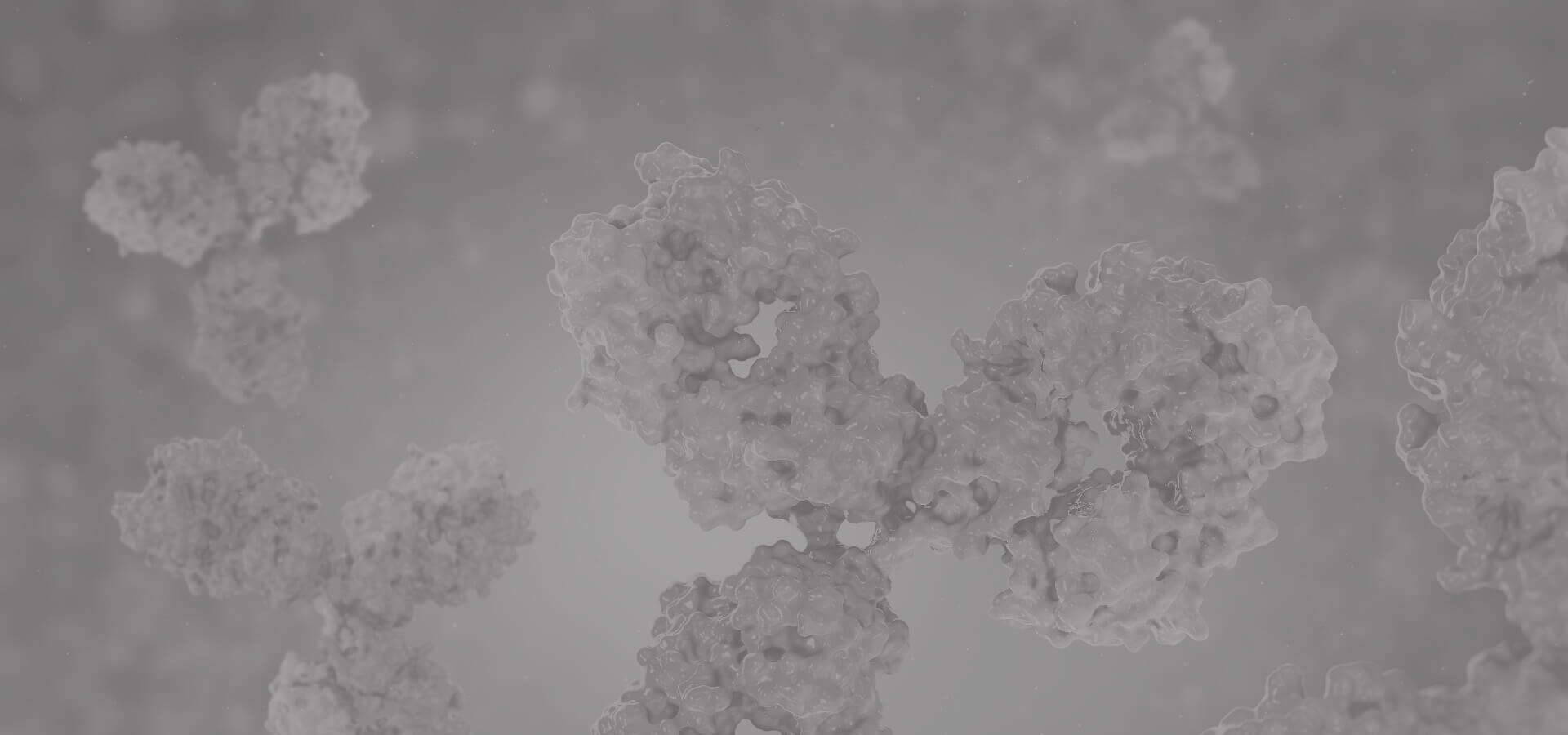ZIC3
This gene encodes a member of the ZIC family of C2H2-type zinc finger proteins. This nuclear protein probably functions as a transcription factor in early stages of left-right body axis formation. Mutations in this gene cause X-linked visceral heterotaxy, which includes congenital heart disease and left-right axis defects in organs. [provided by RefSeq]
Full Name
Zic family member 3 (odd-paired homolog, Drosophila)
Function
Acts as transcriptional activator. Required in the earliest stages in both axial midline development and left-right (LR) asymmetry specification. Binds to the minimal GLI-consensus sequence 5'-GGGTGGTC-3'.
Biological Process
Biological Process atrial cardiac muscle tissue development Source:Ensembl
Biological Process axial mesoderm development Source:Ensembl
Biological Process central nervous system development Source:GO_Central1 Publication
Biological Process central nervous system segmentation Source:Ensembl
Biological Process cranial skeletal system development Source:Ensembl
Biological Process determination of digestive tract left/right asymmetry Source:BHF-UCL1 Publication
Biological Process determination of left/right asymmetry in nervous system Source:Ensembl
Biological Process determination of left/right symmetry Source:BHF-UCL1 Publication
Biological Process determination of liver left/right asymmetry Source:BHF-UCL1 Publication
Biological Process determination of pancreatic left/right asymmetry Source:BHF-UCL1 Publication
Biological Process embryonic pattern specification Source:Ensembl
Biological Process face development Source:Ensembl
Biological Process germ-line stem cell population maintenance Source:Ensembl
Biological Process heart looping Source:BHF-UCL1 Publication
Biological Process hippocampus development Source:Ensembl
Biological Process left/right axis specification Source:Ensembl
Biological Process limb morphogenesis Source:Ensembl
Biological Process lung development Source:BHF-UCL1 Publication
Biological Process mRNA transcription by RNA polymerase II Source:Ensembl
Biological Process neural plate development Source:Ensembl
Biological Process neuron differentiation Source:Ensembl
Biological Process olfactory bulb development Source:Ensembl
Biological Process outer ear morphogenesis Source:Ensembl
Biological Process paraxial mesoderm development Source:Ensembl
Biological Process positive regulation of DNA-templated transcription Source:UniProtKB
Biological Process positive regulation of transcription by RNA polymerase II Source:UniProtKB1 Publication
Biological Process primitive streak formation Source:Ensembl
Biological Process regulation of DNA-binding transcription factor activity Source:Ensembl
Biological Process regulation of transcription by RNA polymerase II Source:GO_Central1 Publication
Biological Process skeletal system development Source:Ensembl
Biological Process smoothened signaling pathway Source:Ensembl
Biological Process stem cell differentiation Source:Ensembl
Biological Process axial mesoderm development Source:Ensembl
Biological Process central nervous system development Source:GO_Central1 Publication
Biological Process central nervous system segmentation Source:Ensembl
Biological Process cranial skeletal system development Source:Ensembl
Biological Process determination of digestive tract left/right asymmetry Source:BHF-UCL1 Publication
Biological Process determination of left/right asymmetry in nervous system Source:Ensembl
Biological Process determination of left/right symmetry Source:BHF-UCL1 Publication
Biological Process determination of liver left/right asymmetry Source:BHF-UCL1 Publication
Biological Process determination of pancreatic left/right asymmetry Source:BHF-UCL1 Publication
Biological Process embryonic pattern specification Source:Ensembl
Biological Process face development Source:Ensembl
Biological Process germ-line stem cell population maintenance Source:Ensembl
Biological Process heart looping Source:BHF-UCL1 Publication
Biological Process hippocampus development Source:Ensembl
Biological Process left/right axis specification Source:Ensembl
Biological Process limb morphogenesis Source:Ensembl
Biological Process lung development Source:BHF-UCL1 Publication
Biological Process mRNA transcription by RNA polymerase II Source:Ensembl
Biological Process neural plate development Source:Ensembl
Biological Process neuron differentiation Source:Ensembl
Biological Process olfactory bulb development Source:Ensembl
Biological Process outer ear morphogenesis Source:Ensembl
Biological Process paraxial mesoderm development Source:Ensembl
Biological Process positive regulation of DNA-templated transcription Source:UniProtKB
Biological Process positive regulation of transcription by RNA polymerase II Source:UniProtKB1 Publication
Biological Process primitive streak formation Source:Ensembl
Biological Process regulation of DNA-binding transcription factor activity Source:Ensembl
Biological Process regulation of transcription by RNA polymerase II Source:GO_Central1 Publication
Biological Process skeletal system development Source:Ensembl
Biological Process smoothened signaling pathway Source:Ensembl
Biological Process stem cell differentiation Source:Ensembl
Cellular Location
Nucleus
Cytoplasm
Localizes in the cytoplasm in presence of MDFIC overexpression (By similarity).
Translocation to the nucleus requires KPNA1 or KPNA6
Cytoplasm
Localizes in the cytoplasm in presence of MDFIC overexpression (By similarity).
Translocation to the nucleus requires KPNA1 or KPNA6
Involvement in disease
Heterotaxy, visceral, 1, X-linked (HTX1):
A form of visceral heterotaxy, a complex disorder due to disruption of the normal left-right asymmetry of the thoracoabdominal organs. Visceral heterotaxy or situs ambiguus results in randomization of the placement of visceral organs, including the heart, lungs, liver, spleen, and stomach. The organs are oriented randomly with respect to the left-right axis and with respect to one another. It can be associated with a variety of congenital defects including cardiac malformations.
VACTERL association X-linked with or without hydrocephalus (VACTERLX):
A syndrome characterized by a non-random association of congenital defects. Affected individuals manifest vertebral anomalies (V), anal atresia (A), cardiac malformations (C), tracheoesophageal fistula (TE), renal anomalies (R) such as urethral atresia with hydronephrosis, and limb anomalies (L) such as hexadactyly, humeral hypoplasia, radial aplasia, and proximally placed thumb. Some patients may have hydrocephalus. Some cases of VACTERL-H are associated with increased chromosome breakage and rearrangement.
Congenital heart defects, multiple types, 1, X-linked (CHTD1):
A disorder characterized by congenital developmental abnormalities involving structures of the heart. Common defects include transposition of the great arteries, aortic stenosis, atrial septal defect, ventricular septal defect, pulmonic stenosis, and patent ductus arteriosus. The etiology of CHTD is complex, with contributions from environmental exposure, chromosomal abnormalities, and gene defects. Some patients with CHTD also have cardiac arrhythmias, which may be due to the anatomic defect itself or to surgical interventions.
A form of visceral heterotaxy, a complex disorder due to disruption of the normal left-right asymmetry of the thoracoabdominal organs. Visceral heterotaxy or situs ambiguus results in randomization of the placement of visceral organs, including the heart, lungs, liver, spleen, and stomach. The organs are oriented randomly with respect to the left-right axis and with respect to one another. It can be associated with a variety of congenital defects including cardiac malformations.
VACTERL association X-linked with or without hydrocephalus (VACTERLX):
A syndrome characterized by a non-random association of congenital defects. Affected individuals manifest vertebral anomalies (V), anal atresia (A), cardiac malformations (C), tracheoesophageal fistula (TE), renal anomalies (R) such as urethral atresia with hydronephrosis, and limb anomalies (L) such as hexadactyly, humeral hypoplasia, radial aplasia, and proximally placed thumb. Some patients may have hydrocephalus. Some cases of VACTERL-H are associated with increased chromosome breakage and rearrangement.
Congenital heart defects, multiple types, 1, X-linked (CHTD1):
A disorder characterized by congenital developmental abnormalities involving structures of the heart. Common defects include transposition of the great arteries, aortic stenosis, atrial septal defect, ventricular septal defect, pulmonic stenosis, and patent ductus arteriosus. The etiology of CHTD is complex, with contributions from environmental exposure, chromosomal abnormalities, and gene defects. Some patients with CHTD also have cardiac arrhythmias, which may be due to the anatomic defect itself or to surgical interventions.
View more
Anti-ZIC3 antibodies
+ Filters
 Loading...
Loading...
Target: ZIC3
Host: Mouse
Antibody Isotype: IgG
Specificity: Human
Clone: 4G6
Application*: E, WB
Target: ZIC3
Host: Mouse
Antibody Isotype: IgG
Specificity: Human
Clone: 3C6
Application*: E, WB
Target: ZIC3
Host: Mouse
Antibody Isotype: IgG
Specificity: Human
Clone: 2D3
Application*: E, WB
Target: ZIC3
Host: Mouse
Antibody Isotype: IgG2a, κ
Specificity: Human
Clone: 4F7
Application*: E, WB
Target: ZIC3
Host: Mouse
Antibody Isotype: IgG2a, κ
Specificity: Human
Clone: 2G1
Application*: E, IF, WB
Target: ZIC3
Host: Mouse
Antibody Isotype: IgG2a, κ
Specificity: Human
Clone: 2C1
Application*: E, WB
Target: ZIC3
Host: Mouse
Antibody Isotype: IgG2a
Specificity: Human
Clone: 6F7
Application*: WB
Target: ZIC3
Host: Mouse
Antibody Isotype: IgG1
Specificity: Human
Clone: 1G7
Application*: WB
Target: ZIC3
Host: Mouse
Antibody Isotype: IgG2b, κ
Specificity: Human
Clone: CBWJZ-095
Application*: SE, E, WB
More Infomation
Hot products 
-
Mouse Anti-BACE1 Recombinant Antibody (61-3E7) (CBMAB-1183-CN)

-
Mouse Anti-CARTPT Recombinant Antibody (113612) (CBMAB-C2450-LY)

-
Rabbit Anti-DLK1 Recombinant Antibody (9D8) (CBMAB-D1061-YC)

-
Mouse Anti-ARG1 Recombinant Antibody (CBYCL-103) (CBMAB-L0004-YC)

-
Rabbit Anti-CBL Recombinant Antibody (D4E10) (CBMAB-CP0149-LY)

-
Mouse Anti-BAD (Phospho-Ser136) Recombinant Antibody (CBYY-0138) (CBMAB-0139-YY)

-
Mouse Anti-EPO Recombinant Antibody (CBFYR0196) (CBMAB-R0196-FY)

-
Rat Anti-ABCC11 Recombinant Antibody (V2-179001) (CBMAB-A0236-YC)

-
Mouse Anti-CASP8 Recombinant Antibody (CBYY-C0987) (CBMAB-C2424-YY)

-
Mouse Anti-CD24 Recombinant Antibody (SN3) (CBMAB-C1037-CQ)

-
Mouse Anti-CD46 Recombinant Antibody (CBFYC-0076) (CBMAB-C0085-FY)

-
Mouse Anti-AZGP1 Recombinant Antibody (CBWJZ-007) (CBMAB-Z0012-WJ)

-
Mouse Anti-BBS2 Recombinant Antibody (CBYY-0253) (CBMAB-0254-YY)

-
Mouse Anti-CARD11 Recombinant Antibody (CBFYC-0811) (CBMAB-C0866-FY)

-
Mouse Anti-APOA1 Monoclonal Antibody (CBFYR0637) (CBMAB-R0637-FY)

-
Mouse Anti-CD33 Recombinant Antibody (P67.6) (CBMAB-C10189-LY)

-
Mouse Anti-AMOT Recombinant Antibody (CBYC-A564) (CBMAB-A2552-YC)

-
Mouse Anti-ALOX5 Recombinant Antibody (33) (CBMAB-1890CQ)

-
Mouse Anti-ARHGAP5 Recombinant Antibody (54/P190-B) (CBMAB-P0070-YC)

-
Mouse Anti-AK4 Recombinant Antibody (V2-180419) (CBMAB-A1891-YC)

For Research Use Only. Not For Clinical Use.
(P): Predicted
* Abbreviations
- AActivation
- AGAgonist
- APApoptosis
- BBlocking
- BABioassay
- BIBioimaging
- CImmunohistochemistry-Frozen Sections
- CIChromatin Immunoprecipitation
- CTCytotoxicity
- CSCostimulation
- DDepletion
- DBDot Blot
- EELISA
- ECELISA(Cap)
- EDELISA(Det)
- ESELISpot
- EMElectron Microscopy
- FFlow Cytometry
- FNFunction Assay
- GSGel Supershift
- IInhibition
- IAEnzyme Immunoassay
- ICImmunocytochemistry
- IDImmunodiffusion
- IEImmunoelectrophoresis
- IFImmunofluorescence
- IGImmunochromatography
- IHImmunohistochemistry
- IMImmunomicroscopy
- IOImmunoassay
- IPImmunoprecipitation
- ISIntracellular Staining for Flow Cytometry
- LALuminex Assay
- LFLateral Flow Immunoassay
- MMicroarray
- MCMass Cytometry/CyTOF
- MDMeDIP
- MSElectrophoretic Mobility Shift Assay
- NNeutralization
- PImmunohistologyp-Paraffin Sections
- PAPeptide Array
- PEPeptide ELISA
- PLProximity Ligation Assay
- RRadioimmunoassay
- SStimulation
- SESandwich ELISA
- SHIn situ hybridization
- TCTissue Culture
- WBWestern Blot

Online Inquiry







